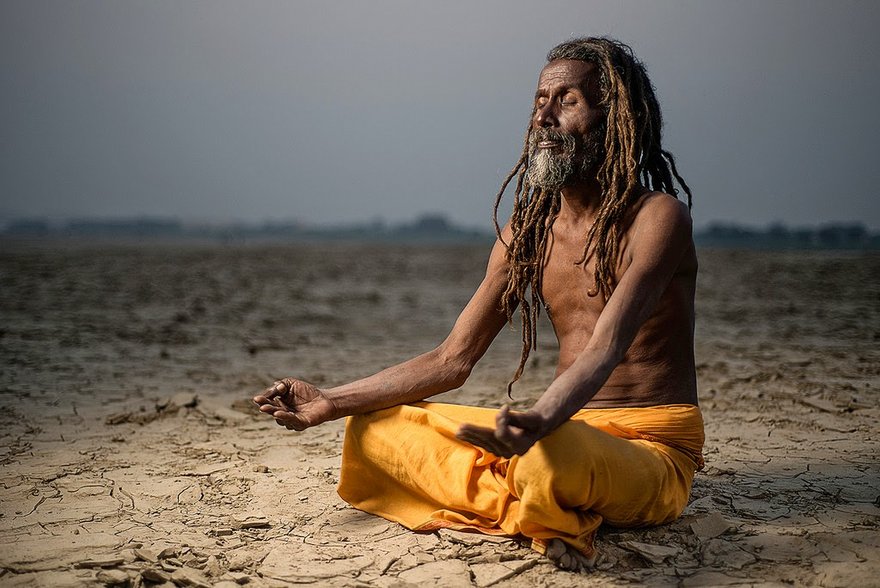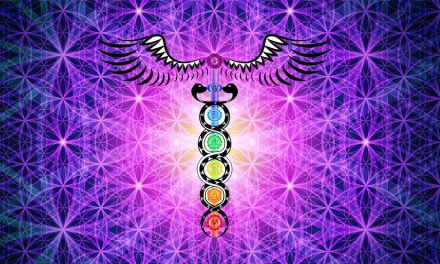Dhyan is a state of pure consciousness, which transcends the inner and outer senses. The climax of Dhyan is samadhi. In Indian tradition, it is used for inner soul growth. Western psychologists link it with mental concentra-tion and consider it a special state of mind. But this is only the early phase of Dhyan. The techniques and nature of Dhyan might vary but even the modern scientific research validates and highlights its benefits.
The term ’Dhyan’ comes from ’dhyai’ dhatu used in ’lat’ pratyaya. Its meaning is contemplation or the natural tendency and direction of senses. Patanjal Yogashastra links it with ekagrata or concentration. According to Sri Aurobindo, Dhyan is that state in which the inner mind tries to see the reality behind things. Ekagrata means focusing the consciousness on one point or object and keeping it steady in one state.
[wp_ad_camp_1]
In yoga, ekagrata is achieved when the mind is deeply engrossed in a special condition like quietude, or action or aspiration or resolve. This is called meditation. It is a form of Dhyan. Dhyan, when constant, is called dharana. In dharana, for the first time, the power of consciousness is directed towards the inner being. When the mind, fixated with only one object, sees only that object and nothing else, it is the state of Dhyan. And when meditating upon the object the mind becomes completely still and merges into that object, the yogis call this condition paramdhyan.
In yoga, the process of keeping chitta centered on any external or internal object for a long time is called avadhan. In dharana, the flow of this process or action remains constant in the desired direction. In its normal condition it is not continuous. The action of making this very flow of chitta continuous and unbroken is called Dhyan. It is a special state of chitta. Dharana and Dhyan may be compared to the flow of water and ghee (milk fat). When Dhyan is centered on the desired objective, it activates the power of resolve. Dhyan helps to strengthen resolve, and the resolve regulates Dhyan. The two are mutually complementary.
According to Sankhya philosophy extermination of attachment is Dhyan ragopahati dhyanam. According to Agni Puran, contemplation with a calm mind is Dhyan. To be engrossed in Brahmibhav is also Dhyan. Dhyan is concentration of chitta in the object dhyai chintayam to dhatu Visnuchinta muhurmuhu¡. Anaksi pnetan manasa dhyanmityabhidhiyate. Brahma samasaktidhyarnam naman dusyate. Garud Puran has used the term Dhyan as: Brahmachintan. Brahmachinta dhyanam syadharana manaso dhti¡, Aham Brahmetyavasthanam samardhibrahmana¡ sthiti¡.
Likewise, in Visnu Puran, too, Dhyan has been used in identical terms. It is the indivisible flow of vtti that is devoid of all sensory knowledge. According to Srimad Bhagwadgita Dhyan is more important than gyan as it cuts away the ties of karma.
Sruti says that Dhyan leads to attainment of pragya. This is the right and best yoga.
“amenanumanen dhyanabhyasarsenach tridha
prakalpayet pragyam labhate yogamuttamam”
The Mahabharat declares Dhyan as the highest and greatest attainment of a yogi. It is of two kinds ekagrata and pranayam. Pranayam together with five other means leads to pratyahar, which in turn enables one to have twelve kinds of dharanas Bhavedishvar sangatvam dhyanam dvadvasham dharanam. To merge oneself into one’s ista with full dedication is also called Dhyan samahitenmanasam chaitayantavartita. Âtmano abhista deshnam dhyandhyanyabhi uchyate.
Tantrasar mentions three kinds of Dhyan. Generally Dhyan is classified into either sagun and nirgun or sarup and arup. Modern thinkers make three categories fullconsciousness (central region), dim or unclear consciousness (middle region) and complete unconsciousness (outer region). Its change from one state into another is very rapid. Different experts have prescribed different techniques of Dhyan either individual or collective. It can be practiced with closed or open eyes, in silence or even while singing. The Jains achieve the state of Dhyan through pranayam. The transcendental meditation is a quiet type of Dhyan while the followers of ISKCON do it with song and music.
The quiet or silent Dhyan has three methods ekagrata, dharana and chanting of mantras. In dharana, mind is focused on an object, which may be a statue, picture, color, flower or a flame of deepak. Ekagrata is considered more difficult. In it, the object of focus could be a Hindu or Buddhist lotus, Islam’s moon, Jew’s Star of David etc. It purely reflects the growth of consciousness.
Dhyan is regarded as a fundamental attribute of the behavior of all living beings, not simply, of humans. Woodworth writes in ’Psychology’ “The mind reacts to certain selected actions only rather than react uniformly to all actions which it receives in a given moment. It concentrates on only one single impulse or a group of impulses and virtually neglects the rest. In the next moment, another impulse takes the place of the former at the center”. According to Woodworth, Dhyan means becoming alert and activated for the purpose of seeing an object or doing some act. Thus according to him Dhyan may be of two types momentary and continuous. In the beginning, it is of course, momentary but it gains continuity by continued application of mind in it.
Sidney Smith opines that Dhyan is nothing but to forget everything else except the objective. Yosen Meredith says that a person who seeks only one thing in life may rest assured that he would get it before the end of his life. According to Charles Dickens Dhyan is a useful, harmless, definite and beneficial process. Swet Mordon thinks that concentrating the power of resolve is ekagrata. Once ekagrata is achieved no work can remain unaccomplished.
The views of western psychologists about Dhyan, in some respects, very much resemble the principles of yoga. In this context, Earnestwood holds that Dhyan begins where dharana ends. Dharana localizes concentration to a very small region of the mental image with the objective of intensifying the light of consciousness on that subject. In dharana, there is a contraction of the field of vision while in Dhyan it expands. Hence, the progress of dharana is inherent in the success of Dhyan. Dhyan demystifies self. It increases physical and mental efficiency too.
Bergansa has said that suppression of external distractions is essential for the deepening and expansion of Dhyan. This view is very close to the Sankhya yoga, which holds that only by asana and relaxation can Dhyan be detached from the accompanying actions. According to Edgar Casey, Dhyan brings to the fore the latent powers of creativity in a person. This power enriches and improves the physical, mental and inner aspects. Eminent philosopher Haridas Chaudhary also holds similar views about the power of Dhyan. John White in his celebrated work “The Meeting of Science and Spirit” has enumerated the many benefits of Dhyan in life. It promotes physical health, reduces tension, anxiety and aggressiveness and leads to self-realization and self-development. Experiments suggest even strengthening of personal and familial bonds through Dhyan. Thus, apart from people with psychiatric problems, Dhyan is beneficial to all. Dhyan has been described in detail by Michael Murphy and Steven Donavan in their research work “The Physical and Psychological Effects of Meditation”. They mention many kinds of experiments and uses of Dhyan and hold it to be a very intense experience.
Donavan in their research work “The Physical and Psychological Effects of Meditation”. They mention many kinds of experiments and uses of Dhyan and hold it to be a very intense experience.
Dhyan regulates and controls electrical and chemical activities in the brain, heart rhythm, blood pressure, skin’s capacity of resistance and many such functions inside the body. It is an active hypometabolic condition. Psychologists call Dhyan a state of “relaxed attention”. John White has enumerated some special benefits of Dhyan thus:
1. A feeling of tranquility and freedom in daily life,
2. Reduction in psychological disorders like anxiety, tiredness and depression etc.,
3. Relief from various pains, such as headache, joint pains etc.,
4. Very beneficial in insomnia;
5. Infinite patience, and increase in affection and sympathy for others
6. Growth in devotion and belief in the Supreme Being and
7. A stronger urges and aptitude for service and cooperation in social life.
John White’s definition of Dhyan carries an imprint of the Dhyan as described in the Indian yoga. He, too considers it a special state of consciousness which climaxes into samadhi. Tibbetan Lama Angarika Govind, who is of German origin, thinks that Dhyan makes a person fulfilled, dissolves the petty ego and helps the individualconsciousness attain at-one-ment with Brahma consciousness.
According to Yogiraj Sri Aurobindo, the right subject for Dhyan is always The Absolute Brahma, and the focus of awareness during meditation should be concentrated on theTruth that all manifestations live, move and have cheer being in the Divine. This is sarvani khalvidani Brahma. A secluded and peaceful place and a calm and quiet mind are essential for Dhyan. Among the many obstacles in path of Dhyan are the fickleness of mind, forgetfulness, sleep, physical and nervous impatience, volatility etc. It is only the firm resolve of the sadhak that would cut through the maze of these impediments and lead him on to the spontaneous awakened awareness of meditation.
The other essential requirement is to maintain the quietude of thoughts and emotions that rise with the growth of inner consciousness. When the inner consciousness is thus engrossed in Dhyan, the deeper realms of enlightened consciousness starts.














Could you please share the location of ashram? I will try my best to share your ashram with others. Thank you.